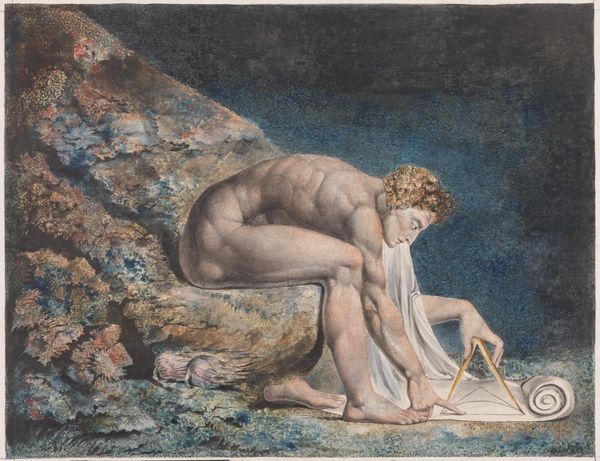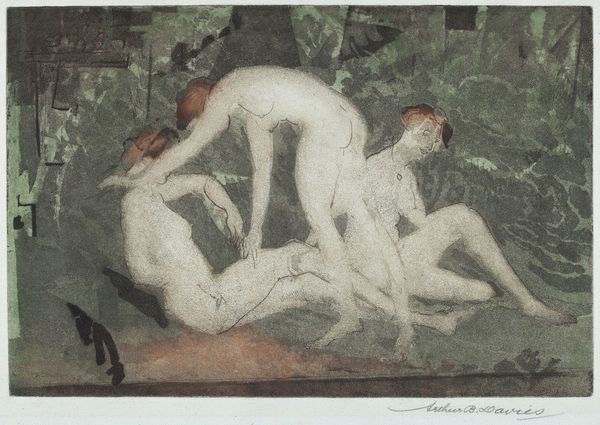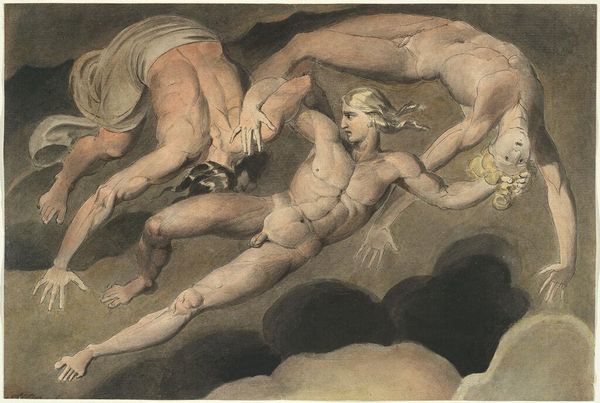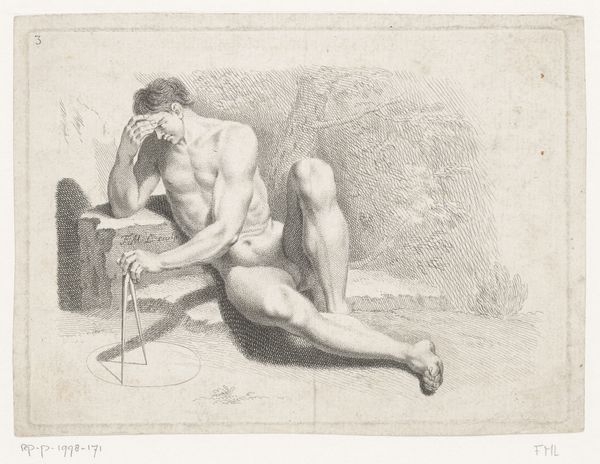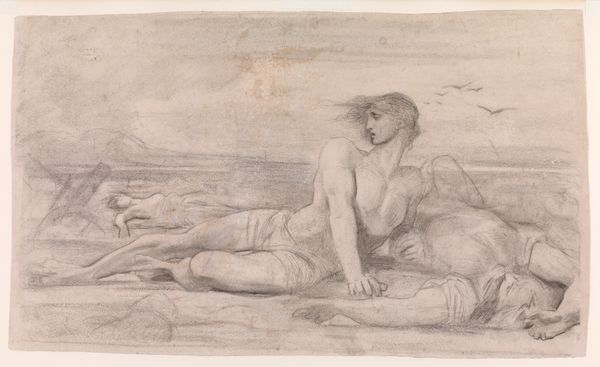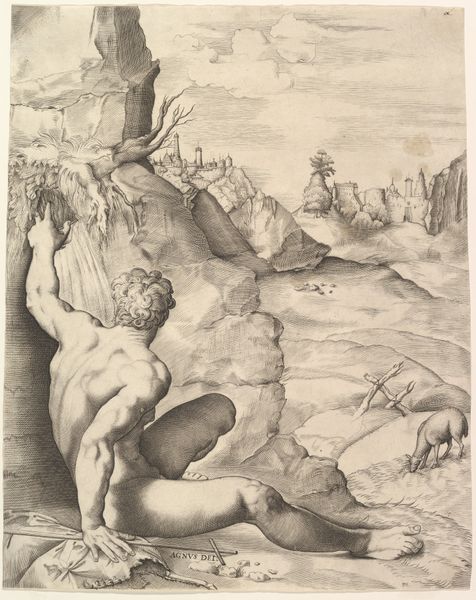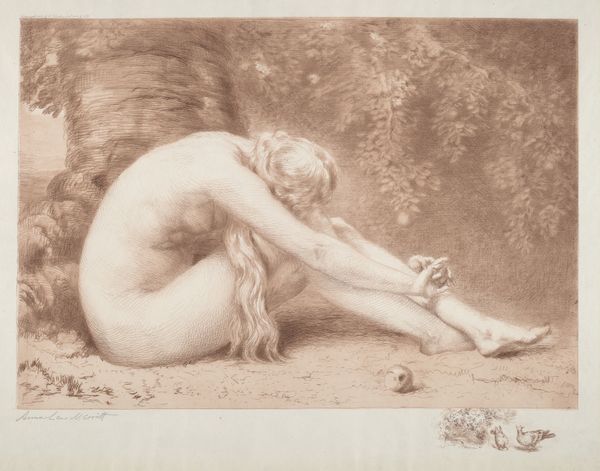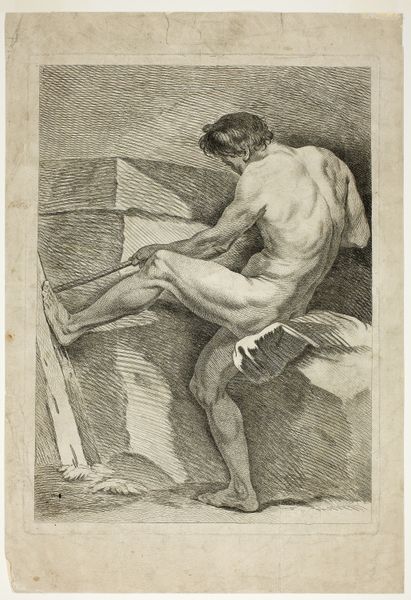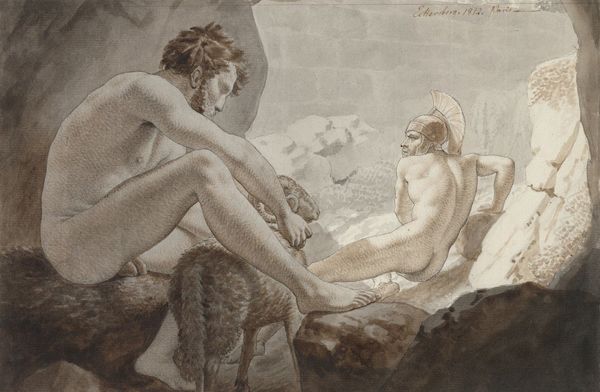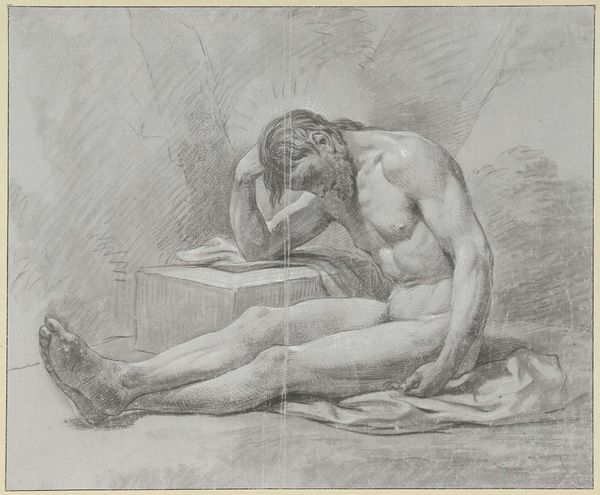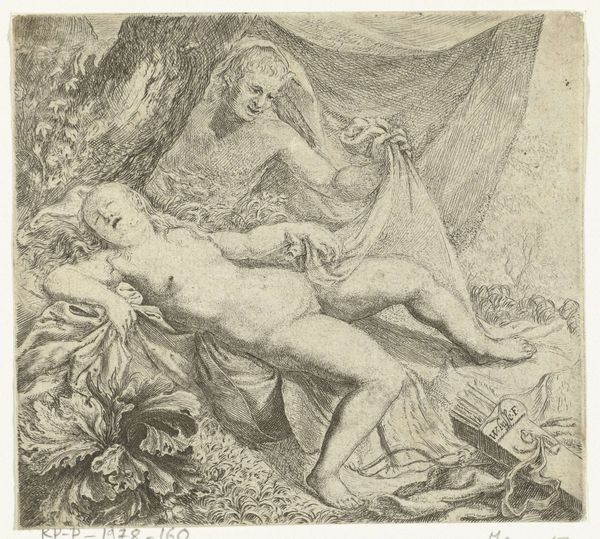
Dimensions: support: 460 x 600 mm
Copyright: CC-BY-NC-ND 4.0 DEED, Photo: Tate
Editor: Here we have William Blake's "Newton," a watercolor drawing. The figure's muscularity is striking, yet he seems confined within the composition. How do you interpret Blake's use of form and space here? Curator: Observe how Blake employs a restricted palette to create contrasting textures: the smoothness of Newton's skin versus the rugged rock. The composition directs our gaze to the geometric precision he pursues, overshadowing the organic world around him. Editor: So, the beauty is in the contrasting textures and the geometric shape, even though it imprisons the figure? Curator: Precisely. It invites a deeper consideration of how intellectual pursuits can both illuminate and restrict our perception of reality.
Comments
Join the conversation
Join millions of artists and users on Artera today and experience the ultimate creative platform.
tate 7 months ago
⋮
Here, Blake satirises the 17th-century mathematician Isaac Newton. Portrayed as a muscular youth, Newton seems to be underwater, sitting on a rock covered with colourful coral and lichen. He crouches over a diagram, measuring it with a compass. Blake believed that Newton’s scientific approach to the world was too reductive. Here he implies Newton is so fixated on his calculations that he is blind to the world around him. This is one of only 12 large colour prints Blake made. He seems to have used an experimental hybrid of printing, drawing, and painting. Gallery label, April 2024
